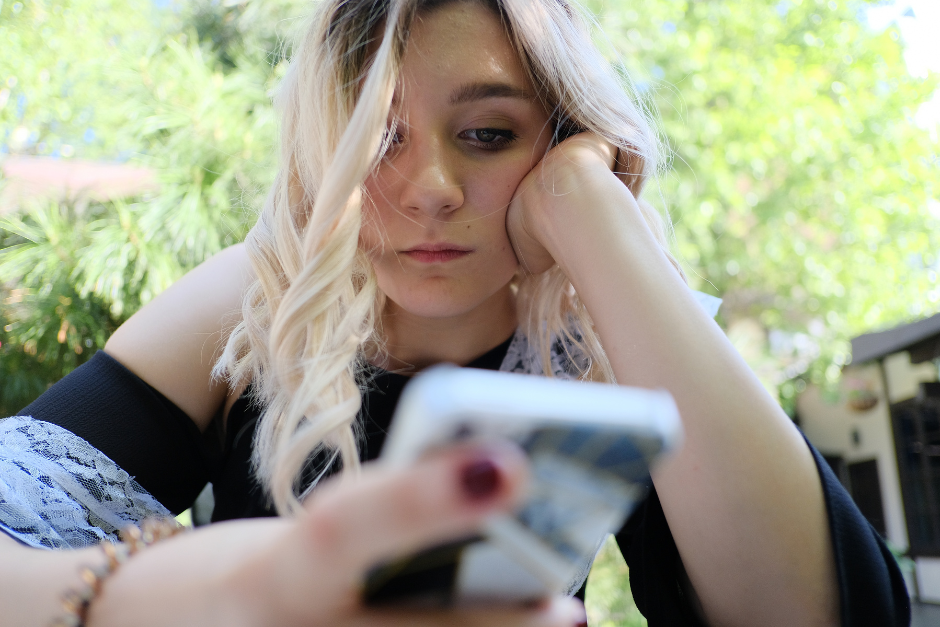For years now, scientists, educators, mental health professionals, policymakers and parents have been expressing concern about the impact of technology and social media on the mental health and well-being of young people.
Now, researchers studying how social media platforms work, have released findings suggesting that teen mental health vulnerabilities are being aggressively targeted through algorithms for the purpose of boosting user engagement and selling ads.
In December, the Center for Countering Digital Hate (CCDH), published a study showing that TikTok’s algorithm, pushes potentially harmful content to young users every 39 seconds. According to the report, once a young user views and likes content about weight loss, body image or mental health, TikTok automatically recommends related videos. In the study, TikTok started recommending videos about eating disorders, self-harm and suicide to account holders who posed as 13-year-olds within 30 minutes after they joined the platform.
“The pathways into extreme content were so innocuous,” CCDH chief executive Imran Ahmed said in a New York Times article. “Your eye might be caught by a video of an aspirational body in beautiful clothes and very quickly the algorithm realizes you’re interested in body image.” From there, Ahmed explained, users quickly start seeing content promoting extreme diet tips and unhealthy body ideals.
“It’s like being stuck in a hall of distorted mirrors where you’re constantly being told you’re ugly, you’re not good enough, maybe you should kill yourself,” said Ahmed. “It is literally pumping the most dangerous possible messages to young people.”
Prompted by the CCDH findings and others, there are a growing number of organizations and agencies seeking to hold social media companies accountable for damage being caused to teen mental health. Earlier this month, Seattle Public Schools filed a lawsuit against the major social media companies —TikTok, Instagram, Facebook, YouTube, and Snap—arguing that by “exploit[ing] the vulnerable brains of youth” for a profit, Big Tech is contributing to the teen mental health crisis in the United States.
Mental Health Effects
Research shows excessive social media use can create feelings of dissatisfaction, isolation, and inadequacy. It distracts young people, disrupts their sleep, and exposes them to bullying, rumor spreading, unrealistic views of other people’s lives and peer pressure.
- A 2019 study of more than 6,500 12- to 15-year-olds in the U.S. found that those who spent more than three hours a day using social media might be at heightened risk for mental health problems. Another 2019 study of more than 12,000 13- to 16-year-olds in England found that using social media more than three times a day predicted poor mental health and well-being in teens.
- Numerous studies have looked at the link between depression and social media use, especially in adolescent and teen girls. Results strongly suggest that depressive symptoms are significantly higher in relation to more time spent and intensity of use on social platforms.
- Nearly 60% of teenagers report having been cyberbullied on social media or harassed online.
Tips for Healthy Social Media Use
Social media isn’t all bad. It provides a way for teens to socialize and connect, reach out for emotional support and find others with common interests. So, with more than 80% of adolescents and teens regularly using social media, it may be unrealistic to ban it outright in your home.
But there are steps parents can take to encourage healthy use:
- Set a good example. Before encouraging their kids to limit their time on devices and social media, parents should think about their own tech habits. Parents are role models. They can show their children the benefits of quality time spent offline and real-life connections
- Limit access for younger children. Delay the age of first use as much as possible so that your child has the time and opportunity to develop healthy relationships with peers and coping skills to handle what they might encounter online.
- Encourage involvement in offline activities. Children who participate in activities that they are interested in – sports, music, volunteering, etc. – build skills, connections and self-esteem. When adolescents and teens feel good about themselves the negative images on social media lose their power.
- Set reasonable limits. Talk to your teen about how to avoid letting social media interfere with his or her activities, sleep, meals or homework. Help them remove the temptation to look at social media constantly, by asking them to consider deleting social media apps from their phone, disabling notifications or leaving their devices at home.
- Monitor your teen’s accounts. Let your teen know that you’ll be regularly checking their social media accounts and make sure to follow through.
- Explain what’s not OK. Discourage your teen from gossiping, spreading rumors, bullying or damaging someone’s reputation — online or otherwise. Talk to your teen about what is appropriate and safe to share on social media. Remind them that you are there to listen and support them if they are being targeted.
- Encourage face-to-face contact with friends. Most adolescents and teens spend much of their time socializing via text or social media apps. Remind your child they can have friends over or they can meet up with friends. Offer transportation when you can.
With care and attention, you can help your teen stay safe online. If you are concerned about the amount of time they spend on social media and its impact on their well-being, you may want to reach out to a mental health provider for support.

